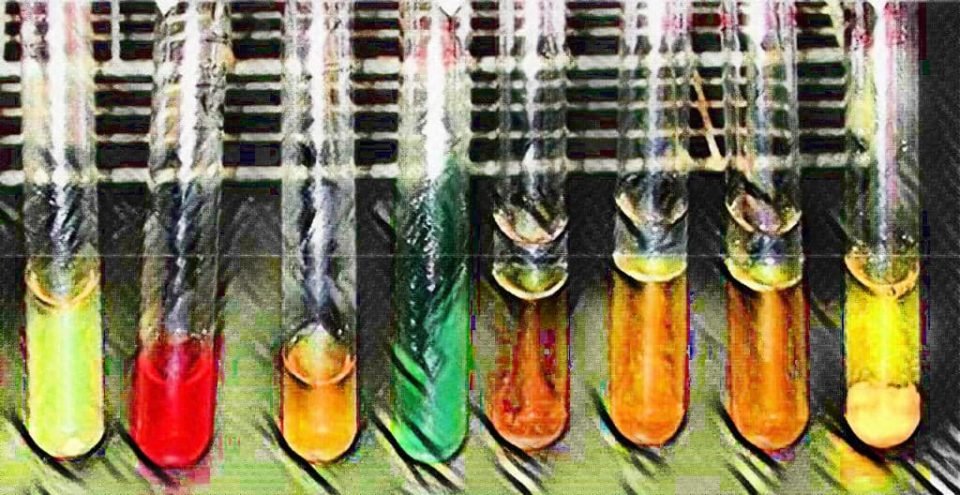Hey, Good to see you here 😀 …… In this Article, we’re gonna discuss in detail about various biochemical tests for the Staphylococcus aureus….. If you have any queries, don’t forget to mention in Comments…Thanks
There are so many biochemical tests for Staphylococcus aureus, the well known causative agent of localized suppurative lesions.
However, only a few reactions are most commonly used and are medically important for distinguishing pathogenic staphylococcus i.e. S. aureus from other non- pathogenic Staphylococci which are as follows:
Beta hemolysis on Blood agar
Golden yellow pigment production
Coagulase production
Mannitol Fermentation
Gelatin liquefaction
Phosphatase production
Deoxyribonuclease (DNase) production
Tellurite reduction
Below is the list of various other biochemical tests for Staphylococcus aureus which have great importance in research:
TEST RESULT
Coagulase
+VE (POSITIVE)
Catalase +VE (POSITIVE)
Gelatin Hydrolysis +VE (POSITIVE)
H2S production -VE (NEGATIVE)
Gas production -VE (NEGATIVE)
Indole -VE (NEGATIVE)
MR (Methyl Red) +VE (POSITIVE)
VP (Voges Proskauer) +VE (POSITIVE)
Citrate +VE (POSITIVE)
PYR -VE (NEGATIVE)
Urease +VE (POSITIVE)
DNase +VE (POSITIVE)
Oxidase -VE (NEGATIVE)
Phosphatase +VE (POSITIVE)
Nitrate Reduction +VE (POSITIVE)
Hyalurodinase +VE (POSITIVE)
Lipase +VE (POSITIVE)
Staphylococcus aureus and other species of staphylococci ferment various sugars producing acid without gas.
However, these sugar fermentation tests are of no diagnostic value in routine laboratory tests except Mannitol fermentation which is of great importance in differentiating Staphylococcus aureus which is mannitol positive from other non-pathogenic Staphylococci, especially from Staphylococcus epidermidis.
The various other sugar fermentation tests are of great importance in research work and for knowledge:
SUGARS RESULTS
Glucose +VE (POSITIVE)
Fructose +VE (POSITIVE)
Lactose +VE (POSITIVE)
Galactose +VE (POSITIVE)
Maltose +VE (POSITIVE)
Arabinose -VE (NEGATIVE)
Mannitol +VE (POSITIVE)
Mannose +VE (POSITIVE)
Raffinose -VE (NEGATIVE)
Ribose +VE (POSITIVE)
Sucrose +VE (POSITIVE)
Xylose -VE (NEGATIVE)
That’s all about Biochemical Tests for Staphylococcus aureus.
Frequently Asked Questions (FAQs)
Q1. What is the biochemical identification of Staphylococcus aureus?
Biochemical identification of Staphylococcus aureus involves performing a battery of tests to determine the bacterium’s ability to ferment various sugars, hydrolyze certain substrates, and produce specific enzymes. Identification can also be confirmed by performing coagulase and catalase tests.
Q2. What tests are done to identify Staphylococcus aureus?
Tests commonly used to identify Staphylococcus aureus include the coagulase test, which detects the presence of the coagulase enzyme, and the catalase test, which detects the production of the catalase enzyme. Other tests, such as the mannitol salt agar test and the tube coagulase test, can also be used.
Q3. What are the four biochemical tests used for identification of bacteria?
The four commonly used biochemical tests for bacterial identification include catalase, oxidase, indole, and urease tests. These tests help to identify the presence or absence of specific enzymes and metabolic pathways in bacterial species.
Q4. What are the biochemical tests for identification of Staphylococcus saprophyticus?
Biochemical tests used to identify Staphylococcus saprophyticus include the Novobiocin susceptibility test and the urease test. Staphylococcus saprophyticus is novobiocin-resistant and produces urease, which can be detected using a urea agar test.
Q5. What are biochemical tests in microbiology?
Biochemical tests in microbiology are used to identify microorganisms based on their ability to metabolize specific substrates or produce certain enzymes. These tests provide valuable information about the metabolic pathways and biochemical characteristics of microorganisms.
Q6. What are the cultural and biochemical characteristics of Staphylococcus aureus?
Staphylococcus aureus is a gram-positive cocci that typically appears as grape-like clusters under the microscope. It grows on blood agar as golden-yellow colonies and is catalase and coagulase positive. It can also ferment mannitol, produce hemolysins and proteases, and is resistant to novobiocin.
User Review
( vote)
Laboratory Hub aims to provide the Medical Laboratory Protocols & General Medical Information in the most easy to understand language so that the Laboratory Technologist can learn and perform various laboratory tests with ease. If you want any protocol to be published on Laboratory Hub, Please drop a mail at contact@laboratoryhub.com. Happy Learning!

